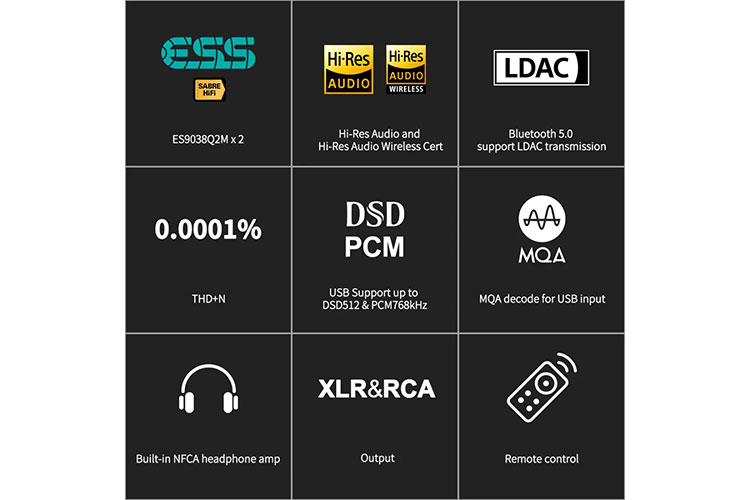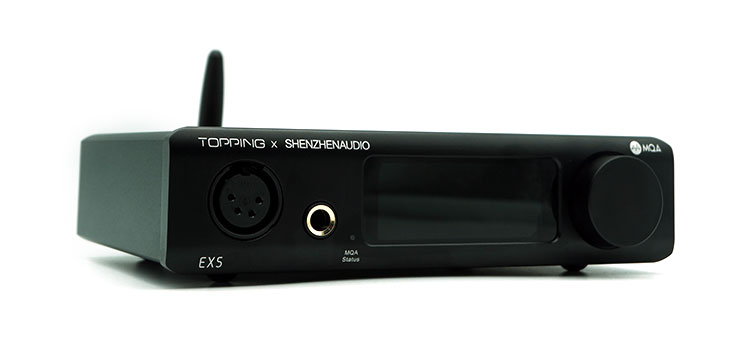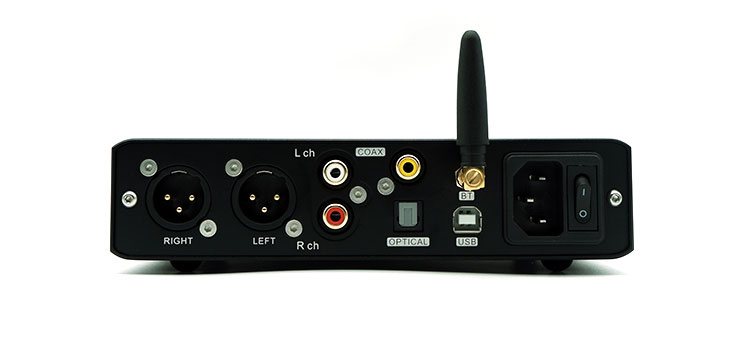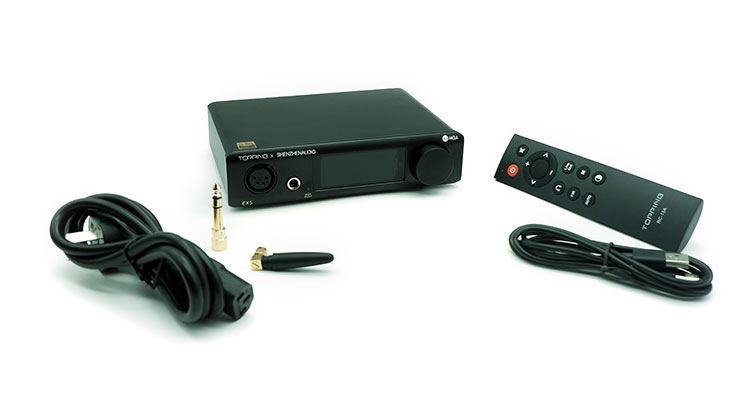The Topping X ShenzhenAudio EX5 is a collaborative headphone amp/DAC featuring Dual ESS ES9038Q2M, MQA, and up to 1.3W of output power. It is priced at $349.99
Disclaimer: The Topping X ShenzhenAudio EX5 sent to us is a sample in exchange for our honest opinion. We thank the team at Shenzhen Audio and Topping for giving us this opportunity.
To read more about Topping products we have reviewed on Headfonics click here.
Note, this 2-page review follows our new scoring guidelines for 2021 which you can read up on here.
Topping is a company that has made its name selling DACs and headphones amplifiers with great value propositions. A number of their highly regarded products have come across our office, including their entry-level amplifier, the L30, their midrange stack the D30 Pro and A30 Pro, as well as their A90 and D90 flagship series.
Shenzhen audio on the other hand is one of Topping’s largest distributors. They are an online retailer that can ship to all corners of the globe.
And it’s interesting to see that the partnership between these 2 companies has resulted in more than a dealership relationship. They have since collaborated to come up with a product that is on paper a very exciting set of features for not too many greens.
Technology Inside
For a little device, the EX5 is packed with features that I could only find in larger stacks. With the USB input, the EX5 utilizes an XMOS XU216 USB chip, which allows it to decode PCM up to 32bit/768kHz, DSD512, and do full MQA decoding.
For Bluetooth input, on the other hand, the EX5 is equipped with a CSR8675, which is itself a DAC chip that also works as a Bluetooth receiver. However, the DAC section of the CSR8675 is bypassed in favor of 2xES9038Q2M DAC chips.
The EX5 employs a digital volume adjustment chip for better tracking between the left and right channel from the lowest to the highest volume level.
Finally, the headphone amplifier section on the EX5 uses Topping’s NFCA headphone amplifier architecture. It boasts of having a diminishingly low THD of 0.0001% for the single-ended output and 0.0003% for balanced 4-pin XLR.
Design
For a device that packs the features that it has, the EX5 is relatively small. I’m also surprised at how light it is, where it just ends up weighing just above 700g. I’m impressed at how many features Topping was able to stuff into such a compact and lightweight device.
The construction of the EX5 immediately reminds me of the construction of both the A30 Pro and the D30 Pro. The chassis is actually dimensionally the same, and they all feature a plastic front fascia that is color-matched with the chassis.
When it comes to the front of the EX5, there is a lot to talk about. There is a 4-pin balanced XLR output, a single-ended ¼” headphone output, an MQA indicator LED, a screen, and a multifunction volume knob.
By default, the screen on the EX5 is empty save for information on the input currently being played. Turning the volume knob will first show the sample rate, and then subsequent turns will change the volume levels.
Input/Output
For a device that is contained in such a small chassis, the EX5 has most of the input options that we would want from a DAC/Amp, which include USB, coaxial, optical, and even Bluetooth 5.0.
These inputs can be routed to 3 different output options, which are the headphone output, and either the single-ended and 4-pin XLR outputs. These outputs can be turned on or off individually, except for the headphone out which can only be on if both pre-outs are off.
Controls
In the middle of the front fascia of the EX5 is a large screen composed of 7-segment displays and some indicator LEDs. This screen displays the different modes of the EX5, the active input, and some letters or numbers that indicate the different modes, volume level, or sample rate being played by the EX5.
The 2 main ways to interact with the EX5 are via the volume knob and using the provided remote control. In my experience, using the volume knob will only allow the user to change the different input modes, and change the volume level of the outputs. The other menu options won’t be accessible using the volume knob.
Remote Control
The remote control on the other hand will allow the user to access all the menu options available to the EX5. Changing the DAC filters, changing the output modes and controlling the brightness, and muting the device can only be done with the remote control.
Using the included remote control, the menu options can be accessed. One of these menu options is the output mode, which can be changed from O-H, O-1 to O-3. These are different outputs that will either use the EX5 as a headphone amplifier or have different combinations of pre-outs, which include single-ended only, XLR only, or both.
There is also a menu option for changing the different filters that are used by the DAC section of the EX5. These are shown by F-1 to F-7, and the types of filters that these F’s are found in the manual.
I believe that only allowing menu access with the use of the remote control might have been a missed opportunity, particularly with the output mode.
Since the device could be stuck in pre-out mode, and there won’t be a way to switch over to a headphone amplifier output without the remote control. So it turns out that the remote control is more of an integral part of the EX5 than an optional accessory.
Bluetooth
Being equipped with Bluetooth 5.0, the EX5 connects with my phone seamlessly. It just takes pairing with the device once, and the connection becomes automatic once both devices’ Bluetooth connection becomes active.
However, it’s worth noting that the EX5’s Bluetooth connection is always on regardless of whatever input is currently being used, so it connects to my phone even when Bluetooth isn’t active on the EX5.
With the wireless Hi-Res branding on the EX5, it features the latest hi-res codecs including aptX, aptX HD, and LDAC, as well as the standard protocols such as SBC and AAC. This means that the EX5’s Bluetooth connection tops out at 32bit/96kHz.
Sonically, the Bluetooth connection is sufficient, but a wired connection to the DAC still adds a bit more clarity and allows for more dynamic range. The volume also changes, where there is around a 7 step discrepancy between Bluetooth connection and wired USB connections.
Packaging & Accessories
The package that the EX5 comes in is a standard Topping shipping box. Opening the box shows that it’s efficiently packed, and there are foam inserts that keep the contents safe during storage and transport.
Inside, there is the EX5, a standard IEC cable, a USB cable, a remote control, a Bluetooth antenna, and a 3.5mm to ¼” adaptor. These are pretty standard, but I’m glad to see that Topping didn’t scrimp on the accessories.
Sound Impressions
DAC/Amp
My overall impression when I listened to the EX5 is that it leans towards the colder side of neutral. There is a good amount of sub-bass extension, but the ethereal quality is not as prominent.
Going into the mid-bass, the quantity of the mid-bass is sufficient, but not overblown. However, each drum hit reproduced in the mid-bass tends to be a bit less rounded and controlled than I have come to expect.
Vocal presentation on the other hand is a bit forward but lacks any harmonic richness due to a more subdued upper mid-range to lower treble transition. Instrument presentation in tracks that have pianos or guitars have a planted fundamental, which makes instruments singular, however without the harmonic overtones, midrange instruments end up being warmer than usual.
While the lower treble is slightly recessed, the mid-treble is present and has a good amount of clarity. This lends cymbals a crystalline and brilliant quality. Cymbal hits also have an edgy quality that gives it a bit more bite. Going into the upper treble though, the air frequencies are rolled off.
Due to the more rolled-off quality of the upper treble range, the soundstage is not particularly expansive. Directionality is acceptable, and the entire soundscape is optimally used provided that the headphones can present images within the entire soundstage.
Although there is a difference between the softest and loudest tones, the EX5 slightly amplifies softer and gentler tones, presenting them with less finesse than expected. Although the EX5 can play loud, the slew rate of the amplifier is not fast enough to present those emotional crescendos normally found in orchestral recordings.
DAC
After running the EX5 as a DAC/Amp, I tried upgrading the amp section by connecting the balanced outputs of the EX5 into my Burson Soloist 3X. This resulted in a mostly similar tonal balance. However, there are some marked improvements brought about by replacing the EX5’s amplifier section.
The most notable difference is in the bass region, where bass notes have a more singular and more textured presentation. There is also a slight bass uptick that shifts the tonal balance to a warmer overall presentation. This also allows drum hits to have a more immediate sense of attack.
The midrange is mostly the same, with the planted fundamental in the midrange. The harmonic ranges are still subdued, which leaves instruments and vocals colder than I have come to expect them. Treble on the other hand is kept practically the same.
Another notable difference is that the dynamic range is increased, which allows a gentler and more dainty presentation of softer passages. This tightens up image clarity within the soundstage.
Click on page 2 below for pairings and select comparisons










